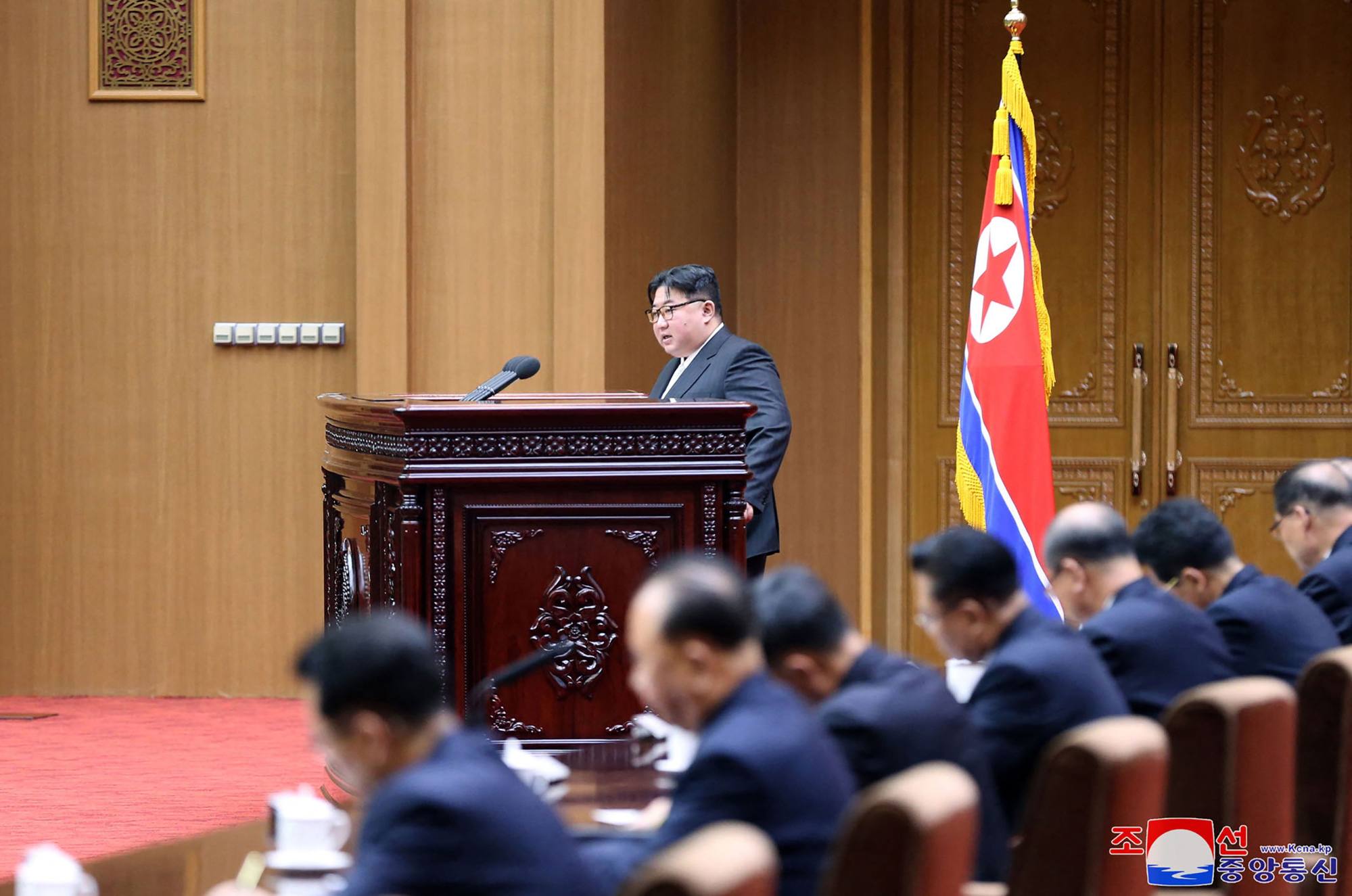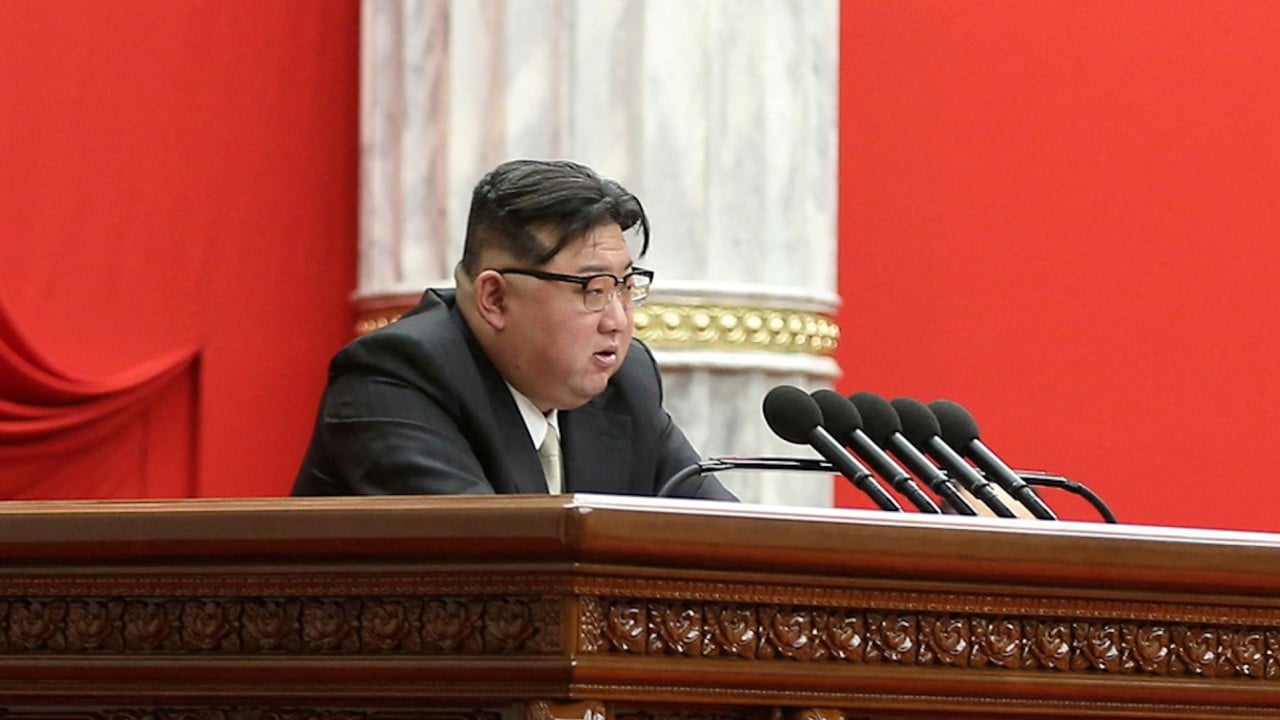
North Korea’s law change raises threat of nuclear war as it declares South its ‘top enemy’
- The North’s bid to enshrine its own border in the Yellow Sea and codify a commitment to invade the South shows ties ‘have reached an almost irreparable breakdown’
- The planned constitutional changes come as some US experts warn Kim’s latest threats to start a war may be more than ‘typical bluster’

North Korea’s pledged constitutional changes mark a clear break with the past, when its revered founder Kim Il-sung, the current leader’s grandfather, defined the South as an object for reconciliation and peaceful reunification under the “one nation, one state and two regimes” policy, observers said.
“The fact that Kim has officially declared he has abandoned his ancestors’ unification policy suggests that inter-Korean relations have reached an almost irreparable breakdown,” Lim Eul-chul, a professor at the Institute of Far Eastern Studies at Kyungnam University, told This Week in Asia.
“I am worried that Kim’s direction to change the constitution to ignore the NLL would seriously raise the risks of armed clashes in the Yellow Sea,” he added.
The NLL is a sea border unilaterally drawn off the western coast by the US-led United Nations after the 1950-53 Korean war to prevent accidental naval clashes. The North does not recognise the line, insisting on its own sea border established further south from the demarcation.
There have been numerous clashes between North and South Korea near the disputed border over the past decades, costing dozens of lives and sunk warships.
Earlier this month, the North fired hundreds of rounds of artillery shells near the tense sea border in the Yellow Sea, prompting South Korea’s military to carry out live-fire drills in response.
Missile test a sign North Korea ‘more willing’ to challenge South, US
Kim’s order for constitutional changes comes as some US experts warn the situation on the Korean peninsula is “more dangerous than it has been at any time” since the outbreak of the Korean war, and that Kim’s frequent talk of “war” might be more than “typical bluster”.
“We believe that, like his grandfather in 1950, Kim Jong-un has made a strategic decision to go to war,” Middlebury Institute of International Studies scholars Robert Carlin and Siegfried Hecker wrote on the 38North website last week.
“We do not know when or how Kim plans to pull the trigger, but the danger is already far beyond the routine warnings in Washington, Seoul and Tokyo about Pyongyang’s ‘provocations’,” they said in an article titled “Is Kim Jong-un preparing for war?”.

Kim had abandoned any hope of normalising ties with Washington following what was seen as a humiliation over the failure of the 2019 Hanoi summit, and the global situation was at present in the North’s favour, including deepening ties with Russia amid the war in Ukraine, Carlin and Hecker wrote.
They noted North Korea had a large nuclear arsenal, potentially 50 or 60 warheads deliverable on missiles that could reach all of South Korea, and virtually all of Japan and Guam.
“If, as we suspect, Kim has convinced himself that after decades of trying, there is no way to engage the US, his recent words and actions point towards the prospects of a military solution using that arsenal,” Carlin and Hecker said. “If that comes to pass, even an eventual US-ROK victory in the ensuing war will be empty.”
Life on the frontline: fear, camaraderie on South Korean border island
Former US ambassador-at-large Robert Gallucci, who served as chief US negotiator during the first North Korean nuclear crisis in 1994, also warned of the possibility of a nuclear war breaking out.
“We should at least entertain the thought that nuclear war could break out in Northeast Asia in 2024,” he wrote in an article published last week by the National Interest website, titled “Is diplomacy between the US and North Korea Possible in 2024?”.
Analysts in Seoul said Kim’s Monday speech, while emphasising the need to prepare for war, was also focused on enhancing the country’s economic development and living standards.
“All in all, Kim was saying this: ‘Don’t touch us as we are prepared to go to war, as we have to concentrate on building up our state, economically and militarily’,” Lim Eul-chul said.
But Yang Moo-jin, a political-science professor at the University of North Korean Studies, said the North was not as equipped to start a war as it did in 1950 on its own initiative, citing the shortages of food, oil and war supplies.
“And China and Russia are in no mood to support such a military adventurism near their doors, as they’ve got their own plates full of problems,” he said.



